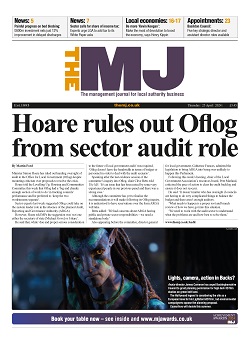It is widely recognised that in this post-Brexit, post-Covid world, there are recruitment and retention challenges of some sort in almost every sector.
Even prior to the pandemic however, local government and the wider public sector faced specific challenges from the need to transform in response to austerity, which have been compounded by recent events.
Having such stubbornly high numbers of unfilled permanent vacancies would challenge the effective performance of the most robust of organisations, let alone one tasked with the delivery of statutory and essential services to their communities including the most vulnerable.
What needs to be done to truly win the battle for talent? One key aspect of recruitment that needs addressing is being more agile and creative than ever before. When candidates expect instant application processes and responses, is local government always resourced to deliver? Speaking to HR professionals across the sector, I know there is already a huge amount of work being done to explore options around engaging with talent; from working on employer value propositions and stronger local branding, finding innovative ways to better engage with candidates and making the most of their investment in apprenticeships – the levy is being paid after all. And longer term all of this valuable work will undoubtedly pay off, but what of the right here and right now?
The use of contingent or interim labour has often been a choice of last resort unless specifically engaged to deliver a project or programme of change. While often true costs are not compared correctly to permanent recruitment, especially in the use of interim professionals, local authority external spend on supply staff will understandably be a concern for senior leaders across the sector. However in the current market organisations cannot rely on the traditional approach to permanent recruitment to deliver, so a more blended approach is needed.
Putting aside our desire to have a fully staffed business, when there are national shortages of key skills are we really going to successfully hire all the permanent staff we need? With this in mind, to neglect your organisations’ use of contingent and interim staff as a key part of your workforce strategy is risky. I would suggest these temporary staff need the same thought and effort to engage as those for permanent recruitment.
I also believe we are in a period of transition where an interim solution can often not only be better contractually, but also offer the opportunity to bring experience into the organisation. Perhaps we should challenge hiring managers more, for instance, do we need exactly what we had before? Is this role niche and specialist, and should we plan for an unsuccessful hiring? These are the types of questions that need to be asked of the workforce model.
Being seen as fast paced, complicated and potential a legislative nightmare, most organisations leave the ‘agency’ world to supply contingent talent. This is understandable and the providers have genuine expertise that can make engaging these types of workers much easier for clients.
Whether it is access to a wider range of tools to find and attract talent, the maintenance of talent pools, specialisms in a specific market or sector or simply a wide network of talent, good partner suppliers are essential. However, recognising the need for contingent or interim supply is not going to diminish in the near future, the fiscal challenges need to be a significant part of any organisation’s workforce planning.
From our recent roundtables with local authority chief executives and HR directors there is an appetite to explore new opportunities and business models such as more regional working and sharing scarce skill sets. And is there a question around bringing this experience back ‘in-house’ as an integrated partner to your talent acquisition function?
Partners embedded in and working to plan for staffing peaks and troughs, contingency planning for difficult areas of recruitment and able to build networks of senior or specialist talent can add real benefit. This capability can create real agility to a recruitment team, make workforce planning more holistic and robust, and prove to offer significant cost savings to the organisation.
One example, alongside the traditional interim services we provide, is with our joint venture model, where we have embedded ‘interim-focused’ talent partners, who are dedicated in supporting the interim needs of the council. By working hand in hand with the council’s workforce team, we are able to meet existing needs while also building sustainability and self-reliance, and generate financial savings through the reduction of external spend.
The talent market is going to continue to be challenging for some time to come and many solutions are longer term, so while the need for contingent labour remains, is it time to explore the options to more effectively engage with the market?
Stephen Hoban is operations director at Commercial Services Group (wholly owned by Kent CC)
This article is sponsored content for The MJ



